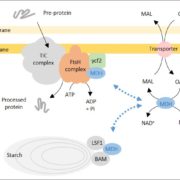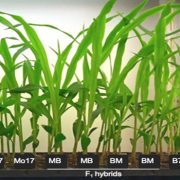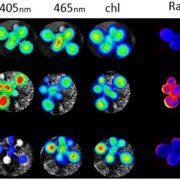New discovery on photosynthesis discovered
| Editor: Marc Platthaus From Neue Erkenntnis zur Fotosynthese entdeckt Translated by Google.
The conversion of carbon dioxide and sunlight into energy (or biomass) and oxygen: hardly any process is as crucial to life on earth as photosynthesis. Although the process has been studied extensively for many decades, researchers at the Westfälische Wilhelms-Universität Münster have now discovered a new mechanism that controls the adaptation of the photosynthesis performance to the lighting conditions.
Muenster – Plants enable countless organisms, including humans, life on earth: they capture the energy of sunlight and convert it into sugar and biomass, releasing oxygen. They lay the foundation for most food chains. Behind this is photosynthesis: a complex molecular “light-gathering machinery” of proteins and pigments. Plants have to flexibly adapt their photosynthesis performance to the light conditions. Thus, there are two photosynthesis complexes, called Photosystems I and II, which work optimally with light of different wavelengths. A German-Finnish team around plant physiologist Prof. Dr. med. Iris Finkemeier, PhD student Annika Brünje and post-doctoral student Ines Lassowskat from the Westfälische Wilhelms-Universität Münster (WWU) has now discovered a new regulatory mechanism for switching between these two photo systems in thale cress (Arabidopsis thaliana).
Acetyltransferase responsible for the process
Background: A common mechanism of molecular regulation is phosphorylation. In the process, proteins are temporarily changed in their function and in terms of their interaction with other proteins by a small reversible chemical change (attachment of a phosphate group). This also happens during the photosynthesis. In addition, there are other regulatory chemical changes of proteins involved in photosynthesis. Iris Finkemeier and her colleagues have also shown a new, previously unknown mechanism: they have for the first time identified a “protein acetyltransferase”, which plays an important role in this regulation. Acetyltransferases are enzymes that attach acetyl groups to proteins for regulation.

Annika Brünje, Prof. dr. Iris Finkemeier and dr. Ines Lassowskat (from left) (Photo: EMU / Jonas Giese)
“Lectures worldwide teach that protein phosphorylation is a prerequisite for ‘switching’ between Photosystems I and II. In the plants that we used for our investigations, the phosphorylation is not disturbed. The ‘switching’ does not work anyway. This means that the phosphorylation alone can not be responsible. We have now shown that it is also responsible for a particular acetyltransferase, “says Iris Finkemeier. The acetyltransferase is called “nuclear shuttle interacting” (NSI) and occurs in the chloroplasts of plants – i.e., in the cell constituents in which the photosynthesis takes place. The researchers demonstrated that NSI acetyltransferase provides various proteins involved in photosynthesis with acetyl groups.
Light collecting antennas will be aligned
Plants in which this acetyltransferase does not work, can adapt their photosynthesis only limited to changing light conditions. Annika Brünje explains: “The plants have mobile molecular light harvesting antennas in the membranes of the chloroplasts. These usually change their position depending on the light conditions and thus switch back and forth between the two photosystems. However, if the NSI acetyltransferase is missing, the transition will no longer work. Obviously, at least two regulatory systems are involved. “
To identify the target molecules of NSI acetyltransferase in the chloroplasts of Arabidopsis, scientists used high-resolution quantitative mass spectrometry. To measure photosynthetic performance and to analyze the light-harvesting complexes, they used spectroscopic techniques and a method for protein separation, native gel electrophoresis. Using a fluorescence microscopy method, they identified the acetyltransferase in the chloroplasts.
In addition to the Münster team, scientists from the University of Turku, Finland, were involved in the study. The people of Münster received financial support from the German Research Foundation (DFG) and the “European Research Area Network for Coordinating Action in Plant Sciences” (“European Research Network for the Coordination of Plant Research”).
Original publication : Minna M. Koskela, Annika Brünje et al. (2018): Chloroplast acetyltransferase NSI is required for state transitions in Arabidopsis thaliana. Plant Cell; DOI: 10.1105 / tpc.18.00155
See also Press Release from the University of Turku, in Finnish. http://www.utu.fi/fi/Ajankohtaista/Uutiset/Sivut/tutkijoiden-loyto-tuo-uutta-valoa-yhteyttamisen-saatelyyn.aspx









